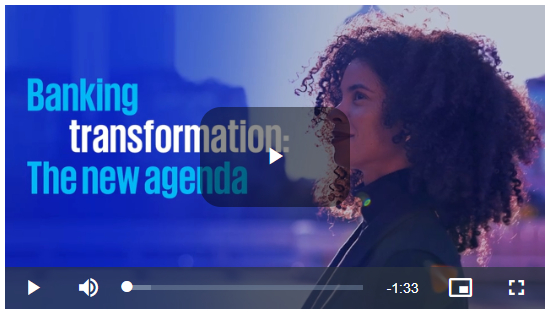- within Finance and Banking topic(s)
- within Finance and Banking topic(s)
- within Finance and Banking, Food, Drugs, Healthcare, Life Sciences and Technology topic(s)
- in United Kingdom
Operational and cost transformation is at the top of the agenda for banks navigating a complex landscape of economic pressure, rising competition, and rapidly evolving customer expectations. With tighter margins and increasing regulatory demands, banks are turning to digital technologies, automation and AI to streamline operations, reduce costs, and enhance service delivery. Yet many banks struggle to deliver on their transformation objectives. Just 18% of banks have been highly successful in achieving their transformation goals.1
Banking transformation: The new agenda, explains why and — more importantly — how leading banks are achieving success.
Based on a recent survey of 228 banking leaders globally and supported by insights from KPMG's global network of banking professionals, this report combines data, experience and insights to provide bank leaders and decision-makers with a clear and value-driven view of success.
Banking transformation: The new agenda
Explore how leading banks are approaching operational and cost transformation initiatives.
Notable findings
- 53% of respondents expect to cut costs by at least 10%
by 2030
Anticipated cost savings are significant for banks. - Only 24% have been successful in achieving cost
reduction goals
Successful transformation has been challenging. - Just 40% consider themselves well-positioned to
implement change management or lead transformation
initiatives
Not all banks are ready for change
What are the most successful banks doing differently to achieve transformative outcomes?
Our research points to a number of key differentiators:
1、They have clearly defined cost objectives
Banks demonstrating successful transformation initiatives set specific, measurable cost goals that align with their broader business strategy.
2、Their cost and transformation objectives are 'fully aligned'
These organisations ensure that cost-saving efforts support — not hinder — their innovation and modernisation agendas.
3、They have allocated substantial budgets
Business leaders allocate sufficient resources to ensure transformation initiatives are well-funded and sustainable.
4、They have made leadership accountable
Executive teams are directly responsible for delivering results, fostering a culture of ownership and performance.
Cost optimisation isn't about cutting for the sake of it. It's about building a smarter, leaner organisation that's fit for the future.
Owen Lewis
Global Lead for Banking Cost Transformation
KPMG in the UK
Five key takeaways
1、Know what you want to achieve
Rather than focusing on siloed cost and transformation initiatives, start by understanding who you want to serve, how you want to serve them and what products and services they will need.
2、Create alignment between transformation and cost
Be clear about your cost and transformation objectives and help the organisation understand the link between operations and efficiency.
3、Understand the levers of value
While technology can enable and unlock efficiency and simplification, consider all of your routes to transformation.
4、Drive successful definition and execution across the enterprise
Whether or not your approach to transformation is centralised, make sure you have a hand in driving results, setting and holding leaders and people accountable, and maintaining visibility to the execution and success of various programmes across the change agenda.
5、Tap into tested experience
Look for support from experienced professionals who can bring tested methodologies and approaches to the table, particularly when seeking to apply new technologies such as generative AI.
The content of this article is intended to provide a general guide to the subject matter. Specialist advice should be sought about your specific circumstances.





